Cervical osteochondrosis- This is a disease, which is a process of breach of nutrition or the gradual destruction of intervertebral joint cartilage tissue and neck discs.
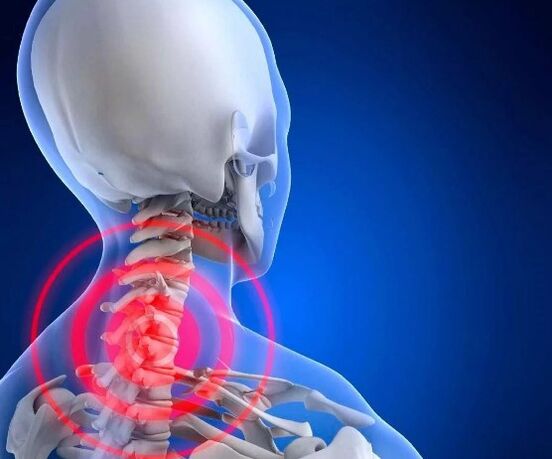
How to use your head on your shoulders easily?
If it is difficult for you to turn your head when your name is on the street, if your neck does not literally keep the word and causes it only pain, it is time to see about osteochondrosis.
It is the cervical part that is more likely to injury, as it is the most mobile and at the same time has a weak muscle score. In small mobile vertebrae, the body creates a large load. And the spinal canal itself is quite narrow. It is easily squeezed to any pressure on it.
Thousands of people feel the severity on the back of the head or tingling in the hands. And not suspecting danger, they call these physiological manifestations with fatigue and a common cold nearby. Many blood vessels and nerve endings are concentrated in the neck. With osteochondrosis, the vertebral artery is squeezed, which provides cerebellum nutrition, an oblong brain and the back of the brain. As a result, it is possible to coordinate a person's movements, it is possible to loss of a sense of balance, the vision falls, the hearing worse, and sometimes this phenomenon leads to a stroke.
Fact. According to WHO statistics, people aged 30 to 40 suffer from cervical osteochondrosis. Doctors explain this trend with a mass decrease in physical activity. And the prevalence of this disease in industrialized countries is equated at 60-80%.
Syndromes and symptoms of osteochondrosis
- Stenosis (spinal channel narrowing syndrome): Tighten the spinal cord vessels from intervertebral disc hernia, osteophytes (bone tissue growth) or thick vertebral ligament. As a result, blood circulation in the affected area is disturbed. A person begins to feel restricted, feels noticeable pain in the cervical spine. At the upper and lower ends, numbness and tingling are found
- Rook Syndrome: Tighten the roots of the intertebral nerve. This leads to headaches expressed in impulses, burned or pulsating impulses, sometimes sensations are similar to the symptoms of hypertension. In this syndrome, impaired speech and smell defects, hypertrophy of facial muscles, damage to linguistic muscles sensitivity, a sense of "clogging" of the throat with nodules may occur. Breathing becomes interruption, a person suffers from snore, he usually seems irrationally, "put" his nose.
- Vail Artery Syndrome: It is formed during compression (compression) of the vertebral artery. Its main satellite is pulsating pain. The attacks can capture the parietal portion, the area above the eyebrows, the temporal and occipital actions.
- Cardian Syndrome:It resembles angina pectoris attacks, but its duration is much longer. The pain is reflected in the diaphragm. In some individuals, this phenomenon is accompanied by increased blood pressure, arrhythmia.
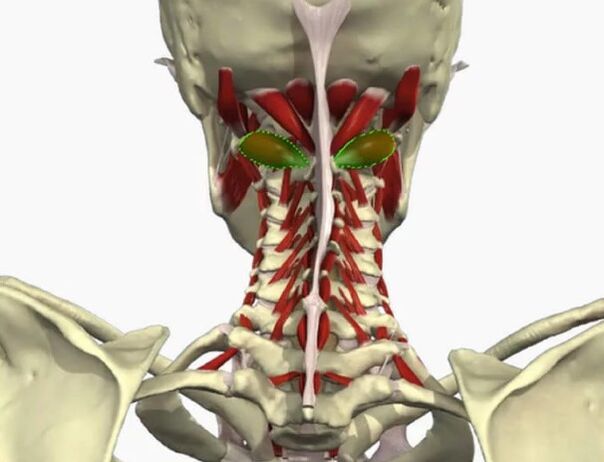
The main causes of disease development
- Employees in metabolism;
- Lifestyle with low motor activity;
- Hereditary predisposition;
- Age -related ossification;
- Clips in the muscles as a result of which posture changes;
- Lack of fluid and vitamins in the daily diet;
- A long stay in an uncomfortable position that increases pressure on the discs and spine;
- Overweight or overload in the spine due to the use of heels;
- All types of lesions in the transmitted spine;
- Regular weight survey;
- Autoimmune diseases (the process of self -distesting of the immune system), which lead to cartilage tissue degeneration;
- Stress, which leads to muscle spasms and a violation of blood flow to intervertebral discs;
- Hypothermia.
Diagnosis of cervical osteochondrosis
The initial diagnosis of "osteochondrosis of the cervical-toracic department" or only the cervical department can already do a doctor during the initial examination of the patient. The specialist will determine:
- A person's type of physique;
- Posture;
- Line of thorny processes;
- Cervical side contours and omplate location angle;
- Location of troubled points and pain level;
- The amplitude of the flexibility of the spine
- Muscle relief.
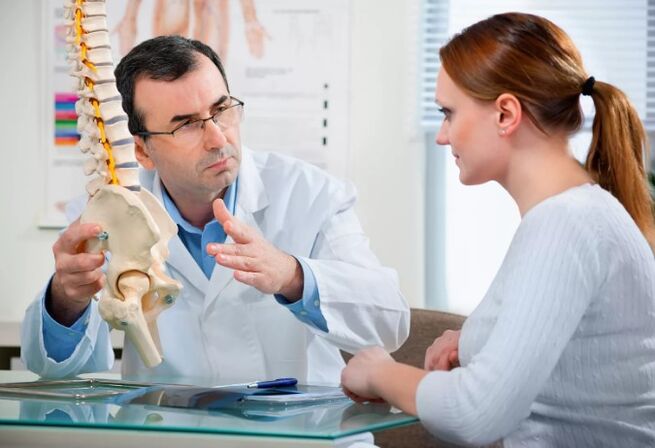
All of this together will say exactly how the disease flows. In addition, the doctor will send to various exams:
- Digital radiography;
- CT (computed tomography);
- Magnetic resonance imaging (magnetic resonance imaging);
- Ultrasound Dopplerography of the main arteries of the brain: a special ultrasonic sensor determines the condition of blood flow and the walls of the blood vessels.
The treatment methodology for cervical spine osteochondrosis
The doctor will help choose the most ideal solution for the problem. And it will offer a variety of treatment methods: medication in combination with physical therapy or prescribes an operation saving to your body.
Conservative treatment- This is first and foremost drug therapy. It relieves the pain, relieves muscle tension and erases inflammation. For such purposes, non -non -esteroids (NSAIDs) and analgesics are prescribed. CondoProtectors also fit the recipe list to activate the recovery processes in the articulation cartilage fabric, as well as group B vitamins and external medicines: gels and ointments containing NSAIDs.
Physiotherapy, in turn, saturates the nutrient medium of the intervertebral disk cartilage tissue and contributes to the regeneration of the cartilage. The doctor will also write exercises for therapeutic gymnastics - to strengthen muscle corset and develop the flexibility of the ligament device. You can perform an introductory lesson with you to correctly perform the exercises correctly.
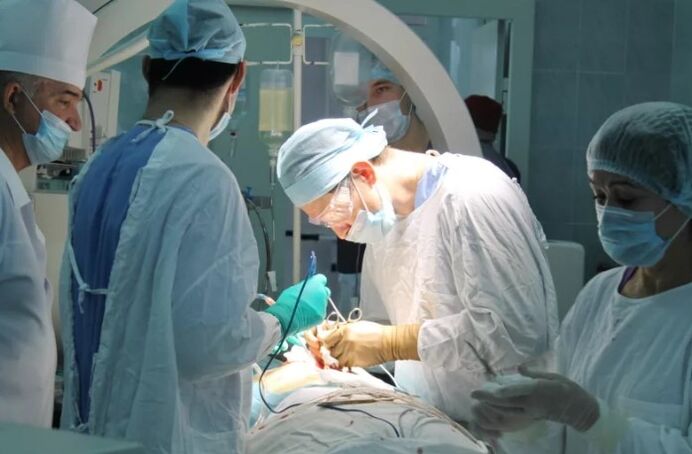
Surgical treatmentIt is appropriate if the physical and medicine effects cannot be dismissed. It is aimed at him if the patient has a catastrophically narrow spinal canal. Operational intervention is called the previous cervical disc. The surgeon immobilizes the affected spinal segment and removes the intervertebral hernia, which presses the spinal nerve. Over time, the vertebrae, among which the disc was removed, are fed. This is called spondylodesis. For more of them, an expert can perform an operation with cage stabilization - that is, the intervertebral space is filled with an artificial insertion.
After 3-5 days, the operated is prescribed from the hospital for outpatient treatment. Rehabilitation takes an average of about 3 months and depends on the established implant and the patient's professional activity.
What is the best way to build a human lifestyle with a diagnosis of neck osteochondrosis?
The daily routine should include mandatory walks, while jumps and running are better to avoid. It is against it for a long time to spend time in a sitting position, swimming is useful - not only strengthens muscle tone, but also relieves the spasms that restrict the body. At night, it will not be superfluous to take a hot bath (except for the treatment period of the cervical region during the exacerbation of the disease). It is important to follow the diet. Use magnesium and calcium saturated products - nuts, dairy and seafood, legumes. We will have to abandon alcohol.
Is it possible to visit the sauna during osteochondrosis exacerbation?
Generally, warming is beneficial to the patient, but after a widely complimented compliment, you will have to refuse to dive into cold water. You cannot run out of ice. Otherwise, an exacerbation of the disease will occur. Cervical osteochondrosis is sensitive to any temperature differences, including climate. For example, autumn cooling can negatively affect a person's well.
What complications can arise after osteochondrosis of the cervical region?
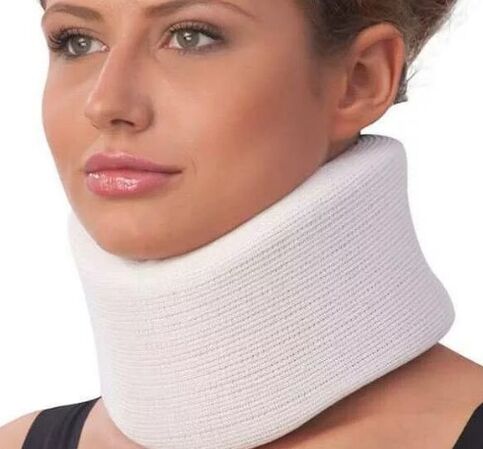
If in time, when the first signs of the disease appear, so as not to start a course of treatment, the neck may stop obeying it in the literal sense of the word. And the complications of this disease are quite serious. There is a risk of protrusion - the "protuberance" of the intervertebral disk so -chall outside the spine, which is later able to acquire the form of a hernia. The nerve roots in the neck can be injured. Or osteophytes (bone growth in vertebrae) will appear. Words usually weaken the muscles or paresis - a state when the head begins to hang sideways or forward. In this department, in the processes of cervical vertebrae, are located the vertebral arteries that feed the brain with blood. The violation of this blood circulation is one of the most serious phenomena. The unwillingness to be treated can lead to neuralgia, deafness and even loss of vision. But if you deal with the solution of the issue, even at the early stage of its development, the disease may be avoided.
Why do you need a chantsis collar?
This is an orthopedic lock made of flexible material, used to immobilize the neck in the treatment of cervical osteochondrosis. But it is impossible to use this device to fix the neck for a long time, as the muscles can weaken over time, and you will get used to involuntarily tilting the head to the side without additional support. Chanser redefinition does not allow vertebrae to change and retain the corrective effect after the massage session. It takes the weight of the head and distributes it equally to the clavicle and the base of the neck. At the same time, the head remains in the correct position.


























